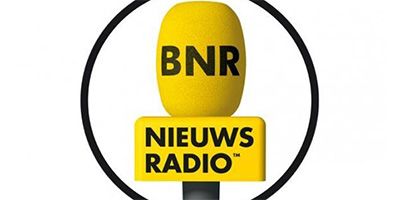
During the summer, in the winter, in the morning or rather in the evening? At the start of the week or just towards the weekend? And what do we actually do around holidays? As a marketer, there are quite a few questions we can ask ourselves before launching campaigns. Because we intuitively sense that time has a significant influence on our (purchase) behaviour and receptivity to advertisements. So it's better to ensure that your product or campaign reaches your target audience at the right moment.
In this blog, we provide you with some practical tips on neuromarketing, behaviour, and time. So you can choose the right moment for your campaign. Or, of course, the right campaign for a particular time 😇.
Purchase Behaviour Throughout the Day
We make choices all day long. Sometimes we browse a webshop in the middle of the day, sometimes in the evening. And one time we go to the supermarket in the morning, another time in the afternoon.
Did you know that the time you go shopping significantly affects what you buy?
Variety-seeking: Familiar in the Morning, Curious in the Afternoon
The time we go shopping mainly influences our so-called “variety-seeking”. Variety-seeking refers to looking at and considering alternatives. In other words, the need for variety.
Gullo, Berger, Etkin & Bollinger (2018) demonstrated this in a large-scale study using scanner data from a supermarket chain. Each receipt had a unique identifier per household, allowing the researchers to analyse buyer behaviour over a period of 25 months and compare the different times at which that household made purchases.
What turns out: in the morning, you are less inclined to seek variety than the rest of the day. You are more likely to go for your familiar choice than to put a different flavour in your basket. This is due to our biological clock, which is significantly influenced by external factors such as sunlight.
Our biological clock affects how much excitement - or internal stimulation - we feel. In the morning, this is generally lower than later in the day. As a result, we have less capacity and energy in the morning to look for alternatives, and we more easily choose familiar products than products that are new to us.
As a marketer, you can cleverly capitalise on this. Advertisements that appeal to variety-seeking in consumers will be more effective in the afternoon or evening than in the morning. For example, advertisements for new products or products that are naturally different from the standard (hello blackberry-lavender yoghurt).
Additionally, it is wise to consider which features or elements you emphasise in your marketing and communication expressions. Whereas a tech brand can safely focus on personalisation in the afternoon and thus display all 30 colour headphones, in the morning it is better to emphasise the high-quality sound. As a restaurant, it might even be interesting to offer less variety on the breakfast menu and more on the lunch or dinner menu.
Distraction in the Morning
Our behaviour throughout the day can also depend on the different goals that are active at different times. A media company cleverly capitalised on this to increase the sale of digital subscriptions. Visitors to the company's website were allowed to read a number of articles for free each month, above which a paywall restricted further access.
Many visitors encountered that paywall in the morning, but hardly anyone subscribed at that time. The reason? Most people were focused on short-term goals in the morning, such as getting ready for the day or taking the children to school.
The media company therefore decided to shift the subscription offer to later in the day, when visitors were less distracted. This way, the company was able to significantly increase the conversion rate (Cummings, Dhar & Welch, 2015).
So think carefully about which motivations and goals your target audience has at different times of the day. Although the display rate of your ads and sometimes even the click rate may seem stable throughout the day, it is likely that at specific times the chance of an actual conversion is highest.
The Fresh Start Effect: An Overlooked Marketing Potential
We all know a moment when we thought: “a new start, I'm going to exercise a lot” or “I'm going to eat healthier”.
Around New Year, for example, or after your birthday. In psychology, this is called the “Fresh Start Effect”, and this effect has a significant influence on our (purchase) behaviour. As a marketer, it is therefore - especially within certain product categories - smart to capitalise on this.
The Fresh Start Effect is the idea that people can experience a mental reset when they enter a new period. This can occur at the beginning of the new year, but also at the beginning of the month or even the start of a new week. Research shows that this influences our behaviour in various ways.
For instance, our interest in a common personal goal, dieting, increases at certain times. Researchers Dai, Riis & Milman (2013) looked at Google search volumes and found that there were more searches for diet-like keywords at the start of the week (+14.4%), at the start of the month (+3.7%), and at the start of a new year (+82.1%).
The researchers not only looked at Google search volume but also at actual behaviour. They examined gym visits from a large sample of students, and it turned out that the likelihood of a gym visit increases at the start of the week (+33.4%), the start of the month (+14.4%), the start of the year (+11.6%), and the start of the semester (47.1%). And also after school holidays and birthdays, the likelihood of a gym visit was higher (respectively +24.3% and +7.5%).
Milestone Ages
Speaking of birthdays; not every birthday is the same. There are certain ages that give us even more of a fresh start feeling. So much so that they significantly increase the likelihood of participating in a marathon.
Look, the ages of marathon runners are not evenly distributed, which is not surprising. You generally expect more registrations from 20-year-olds than 80-year-olds. Yet, even within the younger age categories, there are differences between a number of specific ages.
What turns out: the likelihood of deciding to run a marathon is 12% higher at milestone ages than at other ages (Nikolova, 2021). By milestone ages, we mean ages like 25, 30, 35, and 40. Running a marathon seems to be a good way to usher in a new life phase.

How can you as a marketer capitalise on this? Especially within categories of products and services that help consumers achieve their personal goals, you can make this effect work for you.
For example, as a gym or supplier of dietary supplements, you can emphasise the “new start” in your advertising materials. For instance, increase your advertising budget towards the end of the year and focus your communication on the new year, with slogans like “healthy into the new year?”. Promotions also generally work well during these new start periods.
But not only gyms and suppliers of dietary supplements can take advantage of this. Phill Agnew, host of the podcast Nudge, proved that you can even use it to teach people habits.
He tested which question worked better to get people to listen to a new podcast. One question was: "Would you consider listening to a new podcast in the next few days?”. 9.1% of the people who saw this question answered affirmatively. Another group of people was shown a different question, namely: “Would you consider listening to a new podcast next Monday?”. The result was clear: 15.9% of the people who saw this question answered with a “yes”.
Summer vs. Winter: The Effect of Temperature
We previously wrote about how summer and winter time affects our brain. In this blog, we delve a bit deeper into temperature. Temperature influences our reaction to products and the way we process information, and can even affect the preference for certain types of advertisements.
For instance, it turns out that campaigns that appeal to emotion work better at warmer temperatures than at colder temperatures. Note: at unpleasantly cold temperatures (mid-winter), emotional campaigns do work well, because the consumer unconsciously craves a bit of emotional warmth.
Thus, it can be effective to appeal to nostalgia in the spring (at pleasantly warm temperatures) or mid-winter (unpleasantly cold), as these temperatures enhance the effectiveness of such campaigns (Yang et al., 2022).
References
Gullo, K., Berger, J., Etkin, J., & Bollinger, B. (2018). Does Time of Day Affect Variety-Seeking? Journal of Consumer Research, 0, 1-16.
Hengchen Dai, Jason Riis, and Katherine L. Milkman (2013) ,"The Fresh Start Effect: Temporal Landmarks Motivate Aspirational Behavior", in NA - Advances in Consumer Research Volume 41, eds. Simona Botti and Aparna Labroo, Duluth, MN : Association for Consumer Research
Nikolova, V. (2021). Why You Are 12% More Likely to Run a Marathon At a Milestone Age? https://runrepeat.com/12-percent-more-likely-to-run-a-marathon-at-a-milestone-age
Yang, Q., Lin, Y., Li, H., & Huo, J. (2022). Disentangling the impact of temperature on consumers' attitudes toward nostalgic advertising. International Journal of Consumer Studies, 47, 136-154.


 EN
EN  NL
NL 




